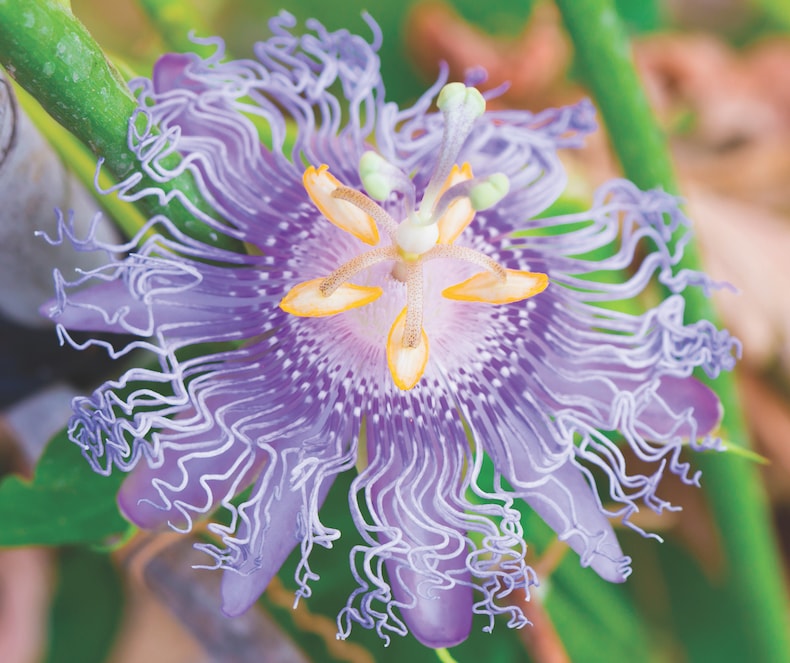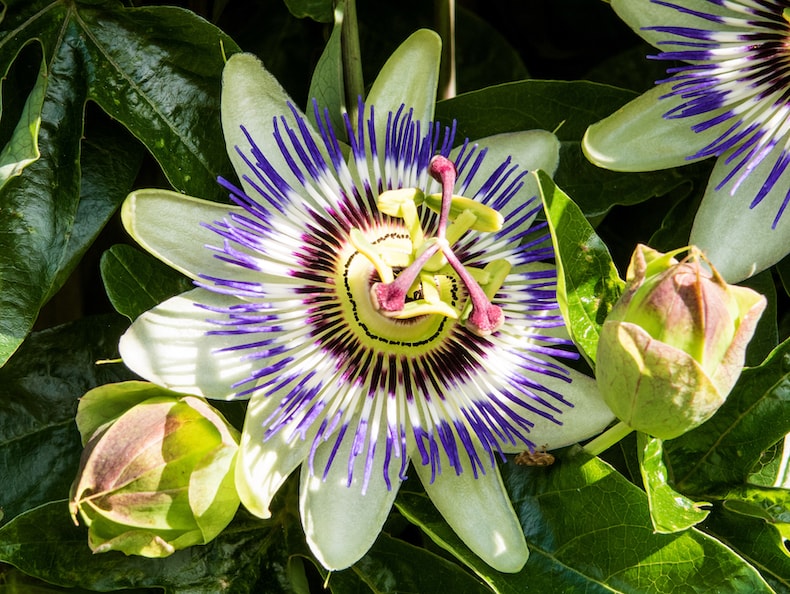
How to prune passion flowers
Passion flowers (Passiflora) are vigorous, evergreen climbers that thrive in sunny, sheltered positions. The exotic flowers come in a variety of colours, but white and purple are most common in the UK. Here’s how to prune your passion flower for a healthy display of brightly coloured blooms, year after year.
When to prune passion flowers

This fast-growing variety is ideal in a conservatory or orangery
Image: Passiflora edulis 'Frederick' from Thompson & Morgan
Passion flowers don’t like to be pruned too hard, too often, as it weakens the plant. Give your plants a light prune at the end of the summer once they’ve finished flowering or, if they require some renovation, a harder prune during early spring is the way to go. Flowers form on new growth, so it’s the old growth you need to focus on removing. If you plan to prune during the spring, bear in mind that you probably won’t get as many flowers that summer.
As your plant grows, you’ll get the best results by training it against a wall, fence, trellis or obelisk. Passion flowers use tendrils to climb and so are self-clinging. To train your plant in the direction you want it to grow, simply tie in the loose stems to secure them.
How to prune your passion flowers

Train your passion flower into a neat fan and trim back to its framework each year
Image: Passiflora caerulea from Thompson & Morgan
- To prune your passion flower, start by removing any dead or damaged shoots.
- Reduce the remaining stems to fit the growth to the available space, forming a fan-shaped framework that should be tied in to its supports with soft ties.
- After flowering, cut back any flowered shoots to two buds away from the previous year's framework of stems.
- Try not to prune any harder than this - hard pruning may forfeit any flowers in the following year.
- If your passion flower gets frost damage, when spring arrives, try cutting the stems back to around a height of 30cm, just above a good bud. With luck, this will stimulate new green shoots to appear.
If you've enjoyed this article, find plenty more climbing plants resources and expert growing guides over on our hub page to help you add vertical interest to your garden.
See all pruning guides
Individual guides
Flower & Shrubs
- Pruning Buddleja
- Pruning Camellias
- Pruning Clematis
- Pruning Fuchsias
- Pruning Hydrangeas
- Pruning Hypercium - St Johns Wort
- Pruning Lavender
- Pruning Magnolias
- Pruning Rhododendron
- Pruning Ribes Sanguineum
- Pruning Rosemary
- Pruning Roses
- Pruning Tree Peonies
- Pruning Wisteria
- Pruning Asparagus
- Pruning Blueberries
- Pruning Goji Berries
- Pruning Honeyberries
- Pruning Raspberries
- Pruning Apple trees
- Pruning Box and Yew trees
- Pruning Catalpa trees
- Pruning Christmas trees
- Pruning Olive trees
- Pruning Patio Fruit trees
- Pruning Pear trees
- Pruning Plum trees
Fruit & Veg
Trees
Banner image: Mali lucky/ Shutterstock
Sign Up For Exclusive Special Offers




© 2024 Thompson & Morgan. All rights reserved. A division of Branded Garden Products Limited.



